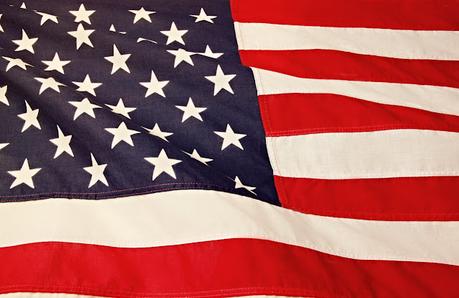A US visa is one of the most difficult to acquire. I've heard and read many refusal stories. The nerve wracking wait until an interview, the expensive fees, and the difficulties in getting a suitable schedule are part of the experience of applying for a visa.

It took me two tries to finally get a US B1/B2 visa.
***I'll be discussing my experience in applying for a US B1/B2 visa. My experience might be different from yours once you go through the process.
How to Get a US B1/B2 Visa

The visa I applied for was a nonimmigrant visa (temporary stay). If you're applying for an immigrant visa, the process you'll go through and the requirements you need to submit will be different. The nonimmigrant visa is for people who want to go to the US for business (B-1 visa) or for tourism/leisure (B-2 visa), or a mix of both (B1/B2 visa).
What are the activities allowed with a B1/B2 visitor visa?- Tour/leisure/holiday/vacation
- Treatment for an illness
- Negotiate contracts
- Participate in a conference
- Meet with business associates
- Visit friends and/or family
- Enroll in a short recreational course (without degree credits)
- Join amateur events or contests
For more details about what you can't and can do using a visitor visa, check this site here.
The Application Form
You'll need to fill out forms to complete your application.
You'll need to create an account and register here.
You'll need to complete the DS-160 form the Online Nonimmigrant Visa Application. You can click this link here.
The questions in the form are straightforward. Some of the questions you'll have to answer include:
- Your full name
- Security questions
- Other names you use
- Relatives living in the US
- Travel history
- Itinerary in the US
- Reasons for traveling to the US
- Work history
- Birthday
- Social media accounts
There are other related questions you need to answer during the process. You can save your answers and and finish answering the form at another time as long as you accomplish it within the deadline. Answer truthfully and you'll be fine.
Paying Your Fee
The visa application fee costs US$185. The US Embassy sets their own exchange rate, so always check so that you'll know the right amount to pay in Philippine Peso. Get a unique receipt number through this link: https://www.ustraveldocs.com/ph/ph-niv-paymentinfo.asp. You can get a unique receipt number when you click on "Deposit Slip - $185 MRV Fee - B1/B2, C-1, D, F, I, J, M, T, TN/TD, U". I followed the instructions on the website and paid my fee at the closest RCBC branch. Keep the deposit slip because you'll need to bring it on the day of your interview schedule. Wait for a few hours before booking a time slot for your interview.
Scheduling an Interview
You can book an interview time slot after payment through this website (the same one where you created an account in). You can keep checking until you find a schedule suitable for you. You can book a schedule and reschedule if you want an earlier or later date. I recommend checking for schedules early in the morning or at night.
Visa Interview Preparation
The things I brought with me on the day of my interview:
- Valid passport
- 2x2 photo
- Visa fee deposit slip
- Confirmation letter
- Certificate of employment
You might want to bring more documents with you such as:
- Property titles under your name
- Bank statements
- Bank certificate
- Income tax return
- Business permit
The consul you might ask for additional documents during the interview. In my case, they only asked for my passport.
TIP: Go through the application form you filled out and remember your answers. Give consistent and similar answers to the consul with your application form as your basis.
Day of Your Interview
Get to the US Embassy early for your interview. The guard will let you in depending on the time slot you chose. You can't bring your phone inside. I recommend just bring the required documents. Follow the queue and wait until your turn for the interview. Stay cool while waiting.
Once at the window, the consul will ask questions related to the application form you submitted earlier. They asked me about my travel history, a bit about myself, if I have relatives in their country, and others. Answer honestly and consistently to improve your chances of approval. Smile and relax, if you have nothing to hide then there's nothing to worry about. The interview might feel like it lasts longer than it actually is (around five minutes or less). It took less than a minute in my case. The consul will ask for your passport and tell you they approved your application. On the other hand, you'll get a letter informing you that they refused your application.
In some cases, a consul might ask for additional documents before deciding. They might initially approve your application and ask for your passport, but after another round of screening, they will ask for more documents. The embassy requested that I do the finger scanning again. It's a case-to-case basis, just be ready to comply with the embassy's requirements.
Is Hiring an Agency Necessary?
An agency can't guarantee approval. The consul will assess your application and ask you the questions. It's up to you if you have the budget to hire an agency for your US visa application.
How to Strengthen Your US Visa Application
The embassy denied my first visa application. It took several out of the country trips before I decided to try applying again. Based on my experience in applying for visas, these are the most common factors that can strengthen your application:
- Financial Capacity - This shows you can afford your holiday and still have money left after your trip. You need to show you have a steady and consistent income such as a profitable business or full-time employment.
- Travel History - This means you travel for leisure and always return to the Philippines. It helps to follow visa rules that countries implement. Overstaying beyond a visa validity is a red flag to the US Embassy.
- Rootedness - This means you have family, properties, a job, or a business. You're more likely to return for the mentioned reasons.
In my opinion these are the main reasons a consul either approves or refuses a visa application. You can always apply again if they refused. You'll know how to improve your application the next time you apply.

